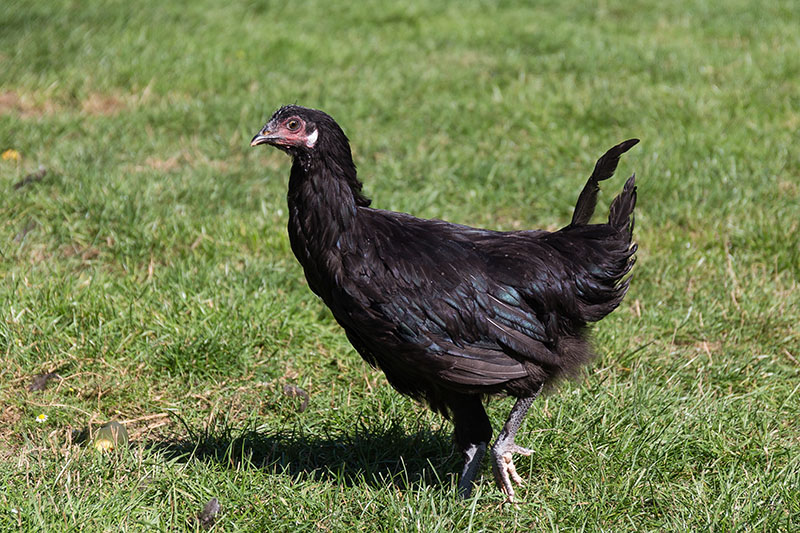La Fleche Chickens
 The La Fleche originates from a village east of Paris, Le Mans; spreading to Mizeray
and La Fleche, the town it was named after. This fowl has many pseudonyms, such as
“satan’s fowl”, “devil bird” or “Fowl of Le Mans”. The La Fleche came to the United
States around the mid-1800’s, however, they did not take to the rough terrain and
were not that hardy so their numbers dwindled while farmers looked to other new breeds.
The fowl was recognized by the APA in 1874 with only one variety.
The La Fleche originates from a village east of Paris, Le Mans; spreading to Mizeray
and La Fleche, the town it was named after. This fowl has many pseudonyms, such as
“satan’s fowl”, “devil bird” or “Fowl of Le Mans”. The La Fleche came to the United
States around the mid-1800’s, however, they did not take to the rough terrain and
were not that hardy so their numbers dwindled while farmers looked to other new breeds.
The fowl was recognized by the APA in 1874 with only one variety.
Characteristics
The La Fleche has very specific features that make it stand out. The fowl has red wattles with white earlobes. It also possess a v-shaped comb that appears in the shape of an arrow, which accounts for its name, “La Fleche” or “the Arrow”. The legs are an ashen gray color with a black to gray beak. The plumage is pure black with some variation of other colors in Europe. This fowl is considered medium sized, but it is considered an excellent table bird because it fattens well with tender white meat. The skin is white. The La Fleche is known especially for the capons and poulardes which are celebrated in France.
Standard Weights
Cock: 8 lbs
Hen: 6.5 lbs
Bantam Cock: 30 oz
Bantam Hen: 26 oz
Varieties
- Black
There are other colors in Europe.
Egg Shell Color
White
Uses
The La Fleche is a dual-purpose bird for meat and eggs. It lay fairly large white eggs, around 150-200 per year, depending on certain conditions like weather and level of comfort.
References
Chicken Breeds and Varieties (A2880), John L. Skinner, University of Wisconsin-Madisom
Ekarius, Carol. "Chickens: La Fleche." Pocketful of Poultry: Chickens, Ducks, Geese, Turkeys. North Adams, MA: Storey Pub., 2007. 94-95. Print.
"La Fleche Chicken." The Livestock Conservancy. The Livestock Conservancy, n.d. Web. 30 June 2015.
Lewis, Celia. "Breed Profiles: La Fleche." The Illustrated Guide to Chickens: How to Choose Them, How to Keep Them. New York: Skyhorse Pub., 2011. 107. Print.
